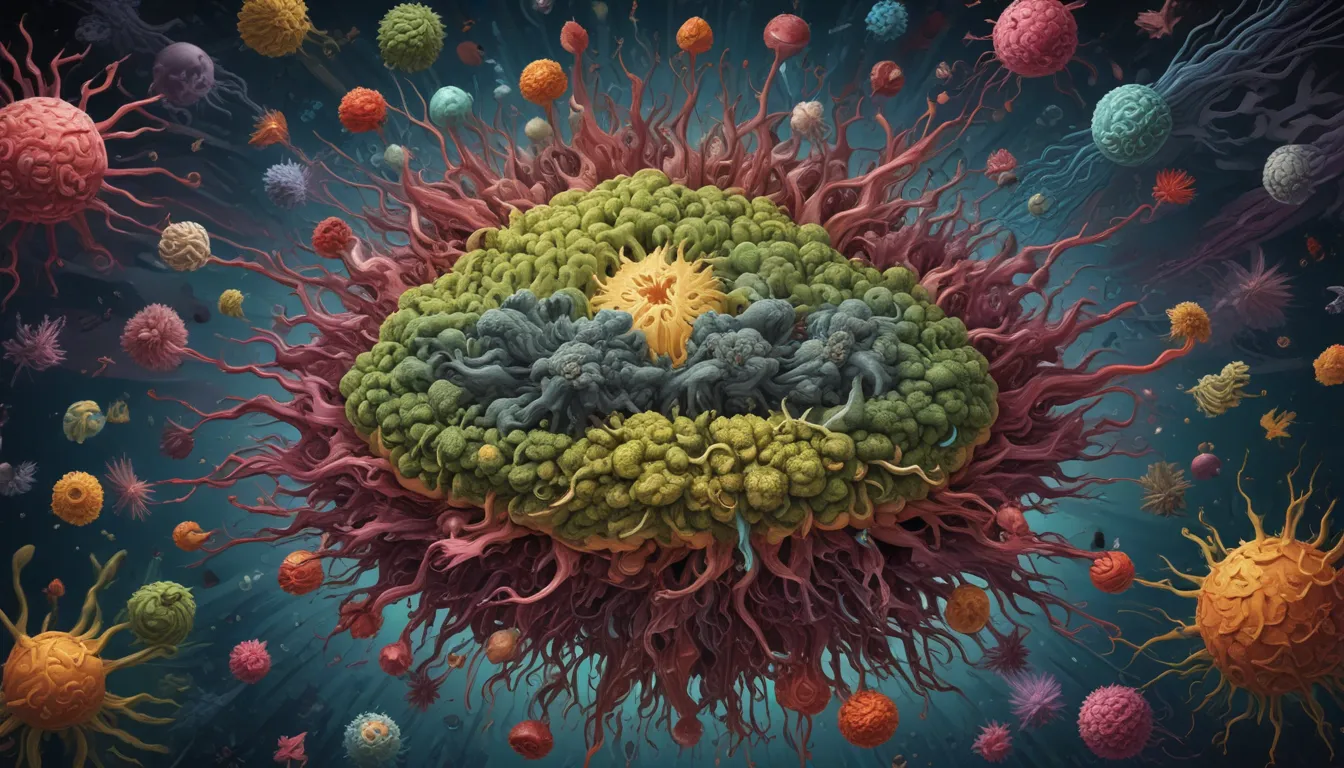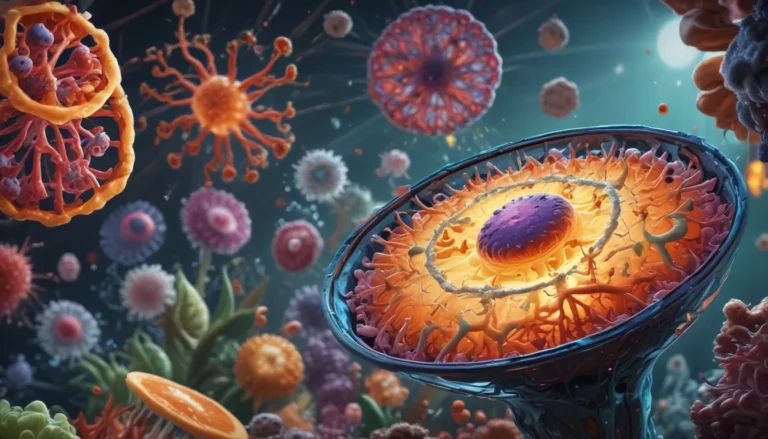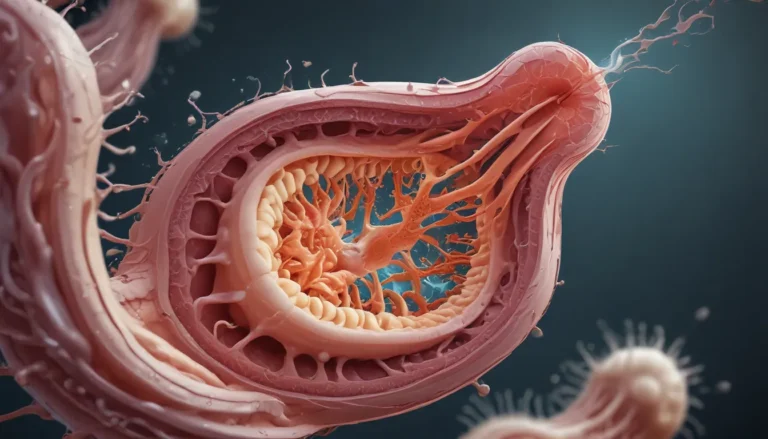A Note About Images: The images used in our articles are for illustration purposes only and may not exactly match the content. They are meant to engage readers, but the text should be relied upon for accurate information.
In the intricate biological battle between our immune system and invading pathogens, the concept of immune evasion emerges as a pivotal strategy. Pathogens, including viruses, bacteria, parasites, and fungi, have evolved ingenious mechanisms to outsmart our immune defenses, allowing them to persist, replicate, and cause diseases. As we delve into this fascinating topic, we uncover 15 extraordinary facts that shed light on the ways in which pathogens evade and manipulate our immune responses.
Understanding Immune Evasion: A Sophisticated Strategy
Immune evasion is a sophisticated strategy employed by pathogens to avoid detection and destruction by the immune system. By utilizing a variety of evasion mechanisms, pathogens can establish infections and cause diseases, posing challenges to the effectiveness of our immune defenses.
Viral Camouflage: The Art of Mutation
Viruses showcase their ability to evade the immune response by mutating their genetic material. This genetic variability makes it challenging for the immune system to recognize and target these constantly evolving pathogens, enabling them to persist and continue to infect.
Bacterial Cloaking Proteins: A Disguised Defense
Certain bacteria produce “cloaking” proteins that bind to antibodies, preventing them from recognizing and attacking the bacteria. This strategy allows bacteria to evade immune surveillance and establish infections within the host’s body.
Parasitic Surface Proteins: Shapeshifting for Survival
Parasites have the ability to modify their surface proteins, making it difficult for the immune system to identify and eliminate them. Through this shapeshifting mechanism, parasites can evade immune responses and establish chronic infections in the host.
Fungal Enzymatic Arsenal: Breaking Down Immune Defenses
Some fungi can produce enzymes that degrade immune molecules, impairing the immune system’s ability to defend against them. By breaking down key components of the immune response, fungi can evade immune detection and continue to thrive in the host.
Intracellular Hideouts: Pathogens Evading Detection
Certain pathogens have the ability to invade host cells and hide from the immune system’s surveillance. By residing within host cells, pathogens can evade detection and escape immune responses, allowing them to persist and cause chronic infections.
Disruption of Signaling Pathways: Undermining Immune Coordination
Pathogens can disrupt signaling pathways within immune cells, leading to a disruption in the coordinated response of the immune system. By interfering with immune cell communication, pathogens weaken the overall effectiveness of immune responses.
Mimicry of Host Molecules: Deceptive Tactics
Some pathogens produce molecules that mimic host molecules, tricking the immune system into tolerating their presence. By resembling host components, pathogens can evade immune detection and avoid being targeted for destruction.
The Impact of Immune Evasion: Chronic Infections and Cancer Development
Immune evasion strategies employed by pathogens can lead to the establishment of chronic infections that persist over extended periods. Additionally, in certain cases, immune evasion mechanisms play a role in the development of cancers by allowing tumor cells to evade immune surveillance and proliferate unchecked.
Vaccine Resistance: A Challenge in Immune Defense
Pathogens that utilize immune evasion strategies can become resistant to vaccines, posing challenges in developing effective preventive measures. By evading vaccine-induced immune responses, pathogens compromise the protective efficacy of vaccination strategies.
A Constant Arms Race: Evolutionary Battle Between Pathogens and Immune System
Immune evasion represents a continuous arms race between pathogens and the immune system. Pathogens constantly evolve new evasion tactics, while the immune system adapts to recognize and combat these strategies. This ongoing battle highlights the dynamic nature of host-pathogen interactions.
Immune Evasion in Autoimmune Diseases: Misguided Attacks
In autoimmune diseases, the immune system mistakenly attacks the body’s own cells and tissues, often due to a failure of immune evasion mechanisms. This misguided immune response contributes to the development and progression of autoimmune conditions.
Therapeutic Interventions: Targeting Immune Evasion Strategies
Understanding the mechanisms behind immune evasion can pave the way for the development of new therapeutic interventions. By targeting and disrupting immune evasion strategies, researchers can explore novel approaches to combat infectious diseases and bolster immune responses.
Contribution to Vaccine Development: Insights from Immune Evasion Research
Studying immune evasion can provide valuable insights into how pathogens evade host defenses, contributing to the development of more effective vaccines. By unraveling the strategies employed by pathogens to evade immune responses, researchers can design robust and comprehensive vaccination strategies.
In conclusion, the realm of immune evasion is a captivating landscape filled with intricate strategies and complex interactions. By exploring the extraordinary facts surrounding immune evasion, we gain a deeper understanding of how pathogens navigate and manipulate our immune defenses. This knowledge not only expands our understanding of biology but also lays the groundwork for innovative approaches to combat infectious diseases and enhance global health.
FAQs: Digging Deeper into Immune Evasion
Q: What is immune evasion?
A: Immune evasion refers to the strategies used by pathogens to evade or suppress the host’s immune response, enabling them to establish infections and cause diseases.
Q: How do pathogens evade the immune system?
A: Pathogens employ various mechanisms such as altering surface antigens, producing immune-suppressing molecules, and disguising themselves as host cells to evade immune detection and destruction.
Q: Why is immune evasion important?
A: Immune evasion is crucial for pathogens to establish successful infections and overcome host defense mechanisms. Understanding these strategies can aid in developing effective diagnostic tools, therapies, and vaccines.
Q: Are all pathogens capable of immune evasion?
A: Yes, most pathogens have evolved immune evasion mechanisms to ensure their survival and spread. The sophistication of evasion strategies may vary among different types of pathogens.
Q: How do scientists study immune evasion?
A: Scientists investigate immune evasion through various approaches, including in vitro experiments, animal models, and clinical studies. By studying molecular interactions between pathogens and the immune system, researchers unravel the strategies pathogens use to evade immune responses.
As we continue to uncover more about immune evasion, we unlock new perspectives and opportunities to strengthen our immune defenses and combat infectious diseases effectively. Stay informed, stay curious, and embrace the journey of discovery in the captivating realm of immune evasion.






